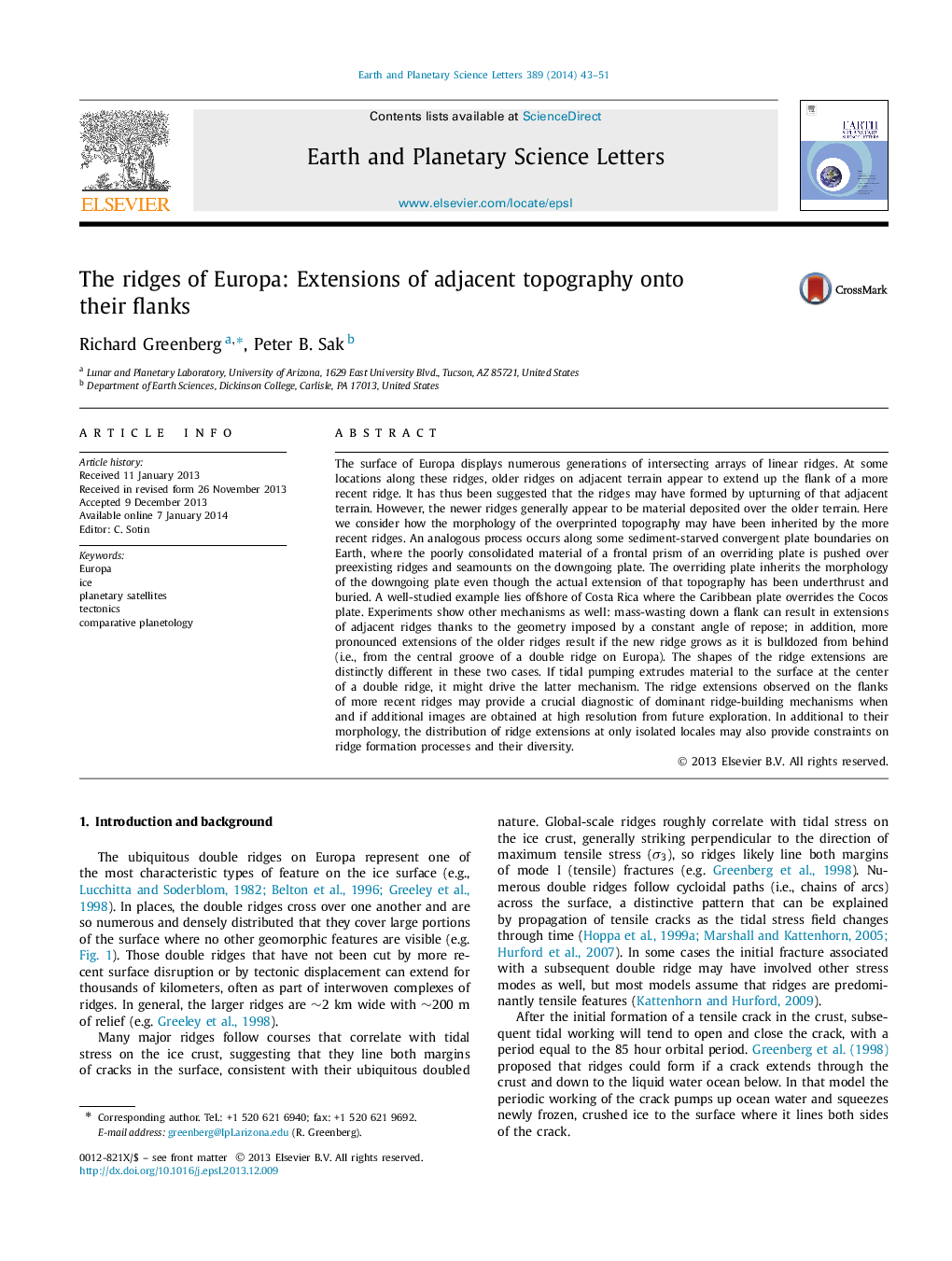| Article ID | Journal | Published Year | Pages | File Type |
|---|---|---|---|---|
| 6429687 | Earth and Planetary Science Letters | 2014 | 9 Pages |
â¢Topography on the flanks of Europaʼs ridges is often aligned with adjacent older ridges.â¢These aligned flank ridges may be inherited from the previous, now-buried surface.â¢Analogous features are observed at terrestrial subduction zones.â¢Laboratory-scale modeling shows similar effects.â¢This process provides an alternative to the model of diapir-driven tilting of terrain.
The surface of Europa displays numerous generations of intersecting arrays of linear ridges. At some locations along these ridges, older ridges on adjacent terrain appear to extend up the flank of a more recent ridge. It has thus been suggested that the ridges may have formed by upturning of that adjacent terrain. However, the newer ridges generally appear to be material deposited over the older terrain. Here we consider how the morphology of the overprinted topography may have been inherited by the more recent ridges. An analogous process occurs along some sediment-starved convergent plate boundaries on Earth, where the poorly consolidated material of a frontal prism of an overriding plate is pushed over preexisting ridges and seamounts on the downgoing plate. The overriding plate inherits the morphology of the downgoing plate even though the actual extension of that topography has been underthrust and buried. A well-studied example lies offshore of Costa Rica where the Caribbean plate overrides the Cocos plate. Experiments show other mechanisms as well: mass-wasting down a flank can result in extensions of adjacent ridges thanks to the geometry imposed by a constant angle of repose; in addition, more pronounced extensions of the older ridges result if the new ridge grows as it is bulldozed from behind (i.e., from the central groove of a double ridge on Europa). The shapes of the ridge extensions are distinctly different in these two cases. If tidal pumping extrudes material to the surface at the center of a double ridge, it might drive the latter mechanism. The ridge extensions observed on the flanks of more recent ridges may provide a crucial diagnostic of dominant ridge-building mechanisms when and if additional images are obtained at high resolution from future exploration. In additional to their morphology, the distribution of ridge extensions at only isolated locales may also provide constraints on ridge formation processes and their diversity.
